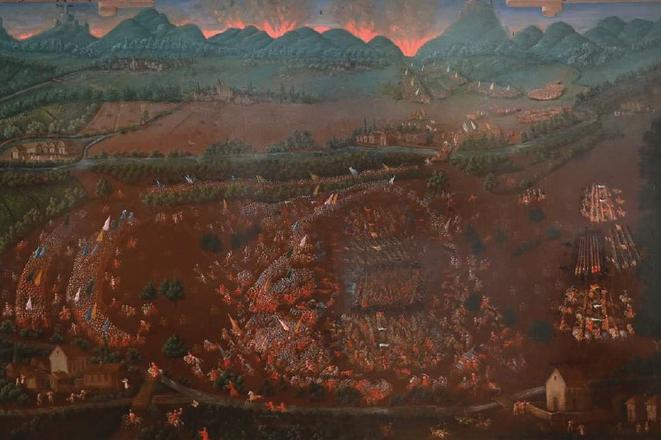A rare 19th-century painting depicting the Battle of Veľké Vozokany, one of Slovakia’s most celebrated victories over the Ottoman Turks, is set to return to public display. The restored work is currently kept in the Ponitrianske Museum’s depository and will go on show from mid-November at its branch in Zlaté Moravce, where it will become part of the museum’s permanent collection.
The oil-canvas painting, titled Battle of Vozokany and measuring 118 by 148 centimetres, is the only known representation of the 1652 battle on Slovak territory. It depicts numerous miniature figures across a panoramic landscape and includes a Latin inscription beneath the scene. Experts believe it was painted by Gallo of Zlaté Moravce in 1837, as a replacement for an earlier lost work commissioned by Count Žigmund Esterházy, a commander who took part in the battle.
The restoration, carried out by Lucia Gregorová and Ľuba Wehlend, took a year to complete and cost €12,280, funded by the Slovak Arts Council and the Nitra Region.
The battle, fought on 26–27 August 1652, saw around 1,300 Christian soldiers led by Count Adam Forgáč defeat some 4,000 Ottoman troops who had been raiding the Nitra region. Among the fallen were four members of the Esterházy family.
Today a bronze lion monument, erected in 1896 to replace an earlier stone obelisk, stands on the battlefield as a national cultural monument — the only memorial of the anti-Ottoman wars in Slovakia.
The statue, showing a lion crushing a Turkish banner, has been vandalised several times in recent years but remains a powerful symbol of one of the country’s most significant 17th-century battles.






